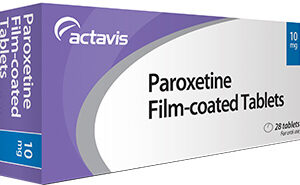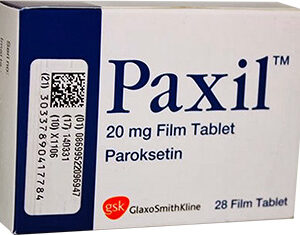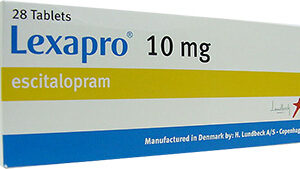Usage and Indications
Amitriptyline is primarily prescribed as an antidepressant, known for its efficacy in treating major depressive disorder. Whilst its primary function is to alleviate symptoms of depression, it has a multipurpose application. This medication is frequently used off-label for chronic pain management, particularly for conditions such as fibromyalgia and neuropathic pain. In addition, it can be beneficial in the treatment of migraines, preventing episodic occurrences. The off-label uses of Amitriptyline are supported by clinical findings, but the drug is predominantly recognized for its impact on depressive symptoms.
Dosage and Administration
The appropriate dosage of Amitriptyline varies, contingent upon the patient’s medical condition and response to treatment. For depression, adults may begin treatment with a low dose of 25 to 50 mg taken orally, generally at bedtime to reduce daytime drowsiness. Over time, the dosage may be increased, typically up to a maximum of 150 mg per day. In the context of pain management, smaller doses are often prescribed. It’s pivotal for patients to strictly follow their healthcare professional’s directives and not to alter or cease dosage without prior consultation, as abrupt changes can precipitate withdrawal symptoms or exacerbate the condition. Administration of Amitriptyline should be consistent each day to maintain optimal levels in the bloodstream.
Precautions and Warnings
Attention must be given to several precautions when taking Amitriptyline. Caution is advised for individuals with a history of cardiovascular issues, as this medication can affect heart rhythm and function. Monitoring and occasional dosage adjustments may be necessary for those with liver or kidney disease, owing to potential alterations in drug metabolism and excretion. Eye examinations are recommended as Amitriptyline can induce eye conditions like glaucoma. Since this drug can cause drowsiness and impair mental alertness, it is advised that patients refrain from operating heavy machinery or driving until they understand how the medication affects them. Additionally, this medication has been associated with an increase in suicidal thoughts, particularly in young adults; it’s of utmost importance that patients communicate any changes in mood or behavior to their healthcare provider promptly.
Contraindications and Interactions
Amitriptyline should not be used in conjunction with or within 14 days of taking monoamine oxidase inhibitors (MAOIs), as this can lead to potentially life-threatening interactions. Patients who have suffered a recent myocardial infarction or who have a hypersensitivity to this drug should not use Amitriptyline. The medication may interact with other drugs such as other antidepressants, certain pain medications, anticholinergics, and alcohol, leading to heightened sedation or other adverse effects. It’s crucial to disclose all medications and supplements one is taking to their healthcare provider to avoid harmful interactions.
Side Effects and Adverse Reactions
Among the common side effects of Amitriptyline are dry mouth, constipation, dizziness, drowsiness, and weight gain. Some individuals may experience blurred vision, trouble urinating, or increased heart rate. While many of these side effects dwindle with continued use, it is important to report persistent or troublesome symptoms to a healthcare provider. Rarely, more severe adverse reactions can occur, such as seizures, severe confusion, or cardiac complications. If such reactions are experienced, immediate medical attention is necessary.
Overdose and Emergency Management
An overdose of Amitriptyline can be lethal and necessitates urgent medical intervention. Symptoms of overdose may include severe drowsiness, hallucinations, convulsions, and cardiac abnormalities among others. If overdose is suspected, one should immediately contact poison control or emergency services. Treatment will be supportive and symptomatic, including potentially gastric decontamination, administration of activated charcoal, and close monitoring of cardiac and vital functions in a hospital setting.
Special Populations
Special considerations are taken when administering Amitriptyline to specific populations. Pediatric and geriatric patients may be more susceptible to side effects and may require customized dosing. This medication should be used cautiously in pregnant or breastfeeding women, with benefits weighed against potential risks. Studies indicate the drug may pass into breast milk, so caution is advised when administering to nursing mothers.
Storage and Handling
Amitriptyline should be stored at room temperature, away from light and moisture, and out of reach of children and pets. Tablets should not be crushed or broken, and unused or expired medication should be properly disposed of, following guidelines to avoid potential harm to others and the environment.
Clinical Pharmacology
In the realm of clinical pharmacology, Amitriptyline’s effectiveness stems from its ability to modulate the central nervous system’s neurotransmitter pathways. This action helps restore the balance of serotonin and norepinephrine, which contributes to its antidepressant properties.
Pharmacokinetics and Metabolism
The pharmacokinetics of Amitriptyline demonstrates its absorption orally, with peak plasma concentrations occurring in a few hours post-ingestion. It is extensively metabolized in the liver, forming various metabolites, some of which are pharmacologically active. The drug and its metabolites are primarily excreted through the urine, with a half-life ranging from 10 to 28 hours, accounting for once-daily dosing potential.
Mechanism of Action
Amitriptyline functions by inhibiting the reabsorption of neurotransmitters serotonin and norepinephrine in the brain, enhancing their availability in the synaptic cleft. Additionally, it possesses anticholinergic, antihistaminic, and anti-alpha-adrenergic properties, contributing to its diverse therapeutic effects and side effect profile.
Clinical Studies and Efficacy
Numerous clinical trials have established Amitriptyline’s efficacy in alleviating depressive symptoms, proving it as an effective treatment for major depressive disorder. Moreover, studies showing positive outcomes in the management of chronic pain, specifically neuropathic pain, have expanded its therapeutic reach beyond depression.
Literature Review and References
The efficacy and safety of Amitriptyline are well-documented in medical literature, with studies published in peer-reviewed journals providing a robust foundation for its use in clinical practice. References to these studies are essential for healthcare providers and may be found in databases such as PubMed, ensuring evidence-based medicine in the prescription of this medication.






Reviews
There are no reviews yet.